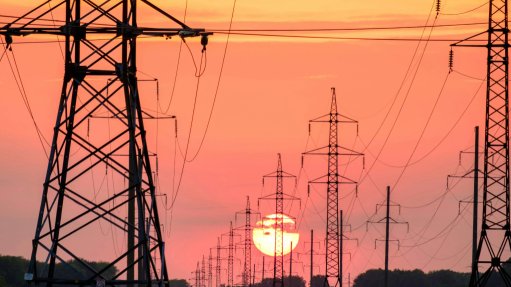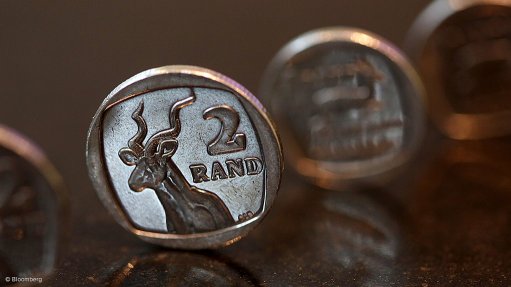Ramaphosa’s SoNA holds bold promises, but lacks finer details, says BLSA
In his February 13 State of the Nation Address (SoNA), President Cyril Ramaphosa highlighted factors that will serve to lift the economy, tackle Covid-19 and boost ailing electricity infrastructure, says Business Leadership South Africa (BLSA) CEO Busi Mavuso.
Of particular interest, she says, were the four priorities of defeating Covid-19, driving an economic recovery, making reforms to improve inclusive growth and a rapid expansion of energy generating capacity, all of which were “spot on”.
In terms of assisting individuals and businesses in generating their own, potentially green energy, Mavuso welcomes Ramaphosa’s commitment to amending the Electricity Regulation Act (ERA) to raise the licensing-exemption threshold for embedded generation above the current 1 MW limit.
As such, he also promised that the National Energy Regulator of South Africa would continue to register small-scale distributed generation applications for own use, while applicants wanting to build plants larger than 1 MW were promised application processing within 120 days.
In addition, Mavuso says Ramaphosa also made “positive comments” on Eskom’s restructuring, enabling municipalities to procure energy directly from independent power producers, and plans for 11 800 MW of procurement.
Meanwhile, she notes that the SoNA mentioned that, from March, the switching off of analogue telecommunications transmitters will open the way for spectrum to be reallocated for broadband, which will trigger investment in fifth-generation technology and has the potential to reduce data costs.
The announcement of a new Water Resources Infrastructure Agency, Mavuso says, has the potential to improve the speed of infrastructure roll-out in an important area, and a focus on improving port and rail capacity was also “positive”.
Further, the announcement of an imminent new scarce skills visa programme is also “very welcome”, she says, as it will relieve some of the chronic skills shortages in the economy.
However, “particularly pleasing” was Ramaphosa’s comments that the private sector must create most jobs and that he will work with the sector to create a more conducive environment for that to happen, notes Mavuso.
“There were also positive recommitments to improving the ease of doing business in the country, and other efforts to promote small businesses and boost youth employment.”
She says these are all positive and, as BLSA wrote in its reaction to SoNA, it is ready to work together to ensure that they are delivered quickly.
Nevertheless, Mavuso points out that there were certain areas that Ramaphosa should have addressed in more detail.
“Everyone from Eskom to the Minerals Council South Africa agrees that the appropriate limit for the Electricity Regulation Act amendment is 50 MW; yet the President announced that there will be consultations on what the limit should be. Why not just cut to the chase and commit to 50 MW and not delay things?” she argues.
Moreover, she says while the positive infrastructure moves were “welcome”, it was also notable that there was only brief mention of the Strategic Infrastructure Projects that have been the focus of previous speeches. There was also limited reference to efforts to mobilise private sector funding for infrastructure, she says, other than through the R100-billion Infrastructure Fund.
“I thought the President could have referred to the discussion in the Economic Recovery Programme of reforms to the public-private partnership framework that the National Treasury oversees.”
This, Mavuso says, is a tried and tested process for mobilising private sector funding – it is ready made, though reforms could improve its functioning.
“Increasingly, business is coming to the view that this process already fits the constitutional and legislative imperatives for smooth partnerships between the private sector and the public sector. Yet, we are not using it,” she says.
Article Enquiry
Email Article
Save Article
Feedback
To advertise email advertising@creamermedia.co.za or click here
Comments
Announcements
What's On
Subscribe to improve your user experience...
Option 1 (equivalent of R125 a month):
Receive a weekly copy of Creamer Media's Engineering News & Mining Weekly magazine
(print copy for those in South Africa and e-magazine for those outside of South Africa)
Receive daily email newsletters
Access to full search results
Access archive of magazine back copies
Access to Projects in Progress
Access to ONE Research Report of your choice in PDF format
Option 2 (equivalent of R375 a month):
All benefits from Option 1
PLUS
Access to Creamer Media's Research Channel Africa for ALL Research Reports, in PDF format, on various industrial and mining sectors
including Electricity; Water; Energy Transition; Hydrogen; Roads, Rail and Ports; Coal; Gold; Platinum; Battery Metals; etc.
Already a subscriber?
Forgotten your password?
Receive weekly copy of Creamer Media's Engineering News & Mining Weekly magazine (print copy for those in South Africa and e-magazine for those outside of South Africa)
➕
Recieve daily email newsletters
➕
Access to full search results
➕
Access archive of magazine back copies
➕
Access to Projects in Progress
➕
Access to ONE Research Report of your choice in PDF format
RESEARCH CHANNEL AFRICA
R4500 (equivalent of R375 a month)
SUBSCRIBEAll benefits from Option 1
➕
Access to Creamer Media's Research Channel Africa for ALL Research Reports on various industrial and mining sectors, in PDF format, including on:
Electricity
➕
Water
➕
Energy Transition
➕
Hydrogen
➕
Roads, Rail and Ports
➕
Coal
➕
Gold
➕
Platinum
➕
Battery Metals
➕
etc.
Receive all benefits from Option 1 or Option 2 delivered to numerous people at your company
➕
Multiple User names and Passwords for simultaneous log-ins
➕
Intranet integration access to all in your organisation


















